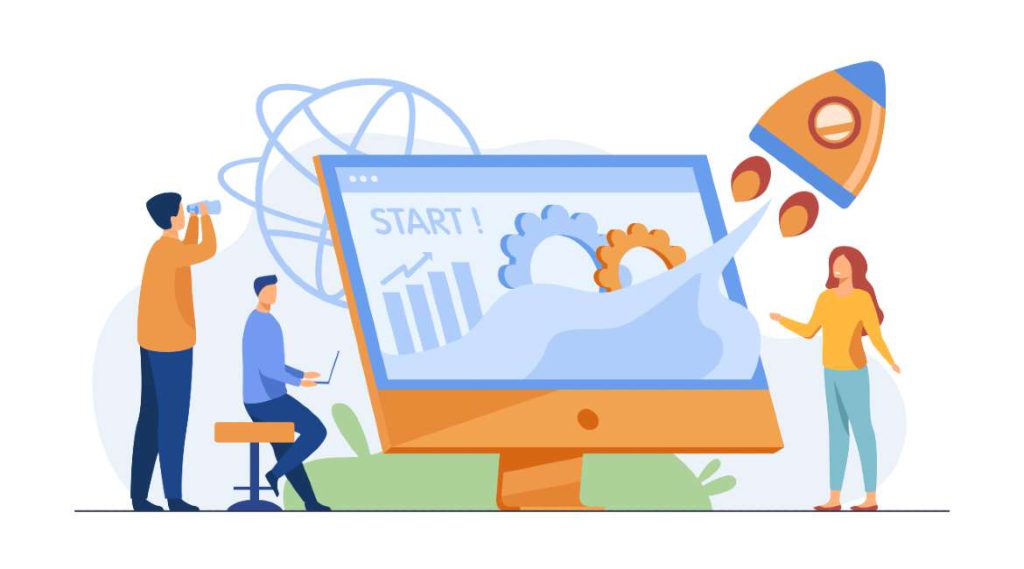Unleashing Creativity in the Workplace: Building an Innovative Environment
Innovation and growth are the lifeblood of a thriving workplace, infusing it with vitality and relevance in an ever-evolving world. This is essential for any company to be able to grow and improve the quality of its products and services.
This dynamic synergy not only propels businesses forward but also fosters a culture of continuous learning and adaptability among employees. Innovation sparks curiosity, fuels collaboration, and ignites the spark of creativity that drives breakthroughs. In turn, growth becomes the natural outcome—a testament to an organisation’s ability to embrace change, navigate challenges, and sculpt its own destiny in the grand theatre of progress.
Why is innovation so important in the workplace?

-
Produces and improves services and products
-
Enhances the efficiency of internal process
-
Increases employee engagement and collaboration in projects
-
Builds a creative environment
-
Creates a better work environment
As a People and Operations Administrator, I have the duty and the opportunity to take care of the learning side of the business. As an organisation that invests in our people, we want everyone to be successful in what we do. We have weekly training sessions where I prepare different topics to bring to the table, and we have an open dialogue with the team. These topics change every week and allow us to bring creativity and innovation to the workplace along with other benefits:
-
Team building
-
Learning and development
-
Retrospective analysis
-
Creativity
-
Makes the workplace fun!

Certainly, fostering an environment that nurtures innovation and creativity requires a deliberate approach. Here are some tips to consider:
-
Encourage Open Communication: Establish a culture where all ideas are valued and open discussions are encouraged. Create platforms for employees to share their thoughts and suggestions, fostering an inclusive atmosphere where diverse perspectives are embraced. Example: Brainstorm ideas sessions or roundtable discussions between teams.
-
Provide Autonomy: Grant employees the freedom to explore their ideas and approaches. Micromanagement stifles creativity, whereas autonomy empowers individuals to take ownership of their projects and think outside the box.
-
Learning Culture: Promote continuous learning by offering opportunities for professional development, workshops, and exposure to new technologies. Learning stimulates fresh perspectives and the integration of novel ideas. Provide employees with the tools, training, and resources they need to turn their ideas into reality. Adequate resources demonstrate the organisation’s commitment to innovation.
Example: I ran surveys at the end of last year regarding Learning and Development Plans for 2023- what the team expects and what areas of the business do they think will require more focus. This helped me map out the training sessions for the whole year which were tailored to the needs of the team. Best place to get the answers you’re looking for is directly from your team. It’ll help you make more informed decisions.
-
Leadership Support: Leadership should lead by example by being open to new ideas, receptive to feedback, and actively participating in creative initiatives. Their support sends a strong message throughout the organisation.
-
Current Market Needs: Focus on understanding customer needs and challenges deeply. This customer-centric perspective often sparks innovative solutions that directly address real-world issues.
Example: Gaining an edge could involve inviting specialists from various fields for in-person visits and informal discussions with the team, centred around current market trends. This strategy can bring valuable expert insights to the team, shaping their thinking and igniting fresh concepts. Additionally, staying current in the industry can happen by engaging in or hosting roundtable talks, virtual gatherings, and in-person events. These activities offer insights into customer requirements, informing your strategies and innovation efforts
-
Celebrate Successes: When an innovative idea leads to a positive outcome, celebrate it. Publicly acknowledging successes reinforces the value of creativity and encourages others to contribute. Implement a system that acknowledges and rewards innovative contributions. Recognition not only validates employees’ efforts but also sets an example for others to follow suit.
Example: Gaining an edge could involve inviting specialists from various fields for in-person visits and informal discussions with the team, centred around current market trends. This strategy can bring valuable expert insights to the team, shaping their thinking and igniting fresh concepts. Additionally, staying current in the industry can happen by engaging in or hosting roundtable talks, virtual gatherings, and in-person events. These activities offer insights into customer requirements, informing your strategies and innovation efforts
-
Celebrate Successes: When an innovative idea leads to a positive outcome, celebrate it. Publicly acknowledging successes reinforces the value of creativity and encourages others to contribute. Implement a system that acknowledges and rewards innovative contributions. Recognition not only validates employees’ efforts but also sets an example for others to follow suit.
By implementing these tips, an organisation can cultivate an environment that not only supports innovation and creativity but also thrives on them, ensuring a constant influx of fresh ideas and solutions.
I always say we spend so many hours working each day, and we should be in a place where we know that we matter, but also, that we can grow professionally and personally. This is the key for a business to succeed! For more insights on building an effective workplace, check out IT Talent Insights page.
